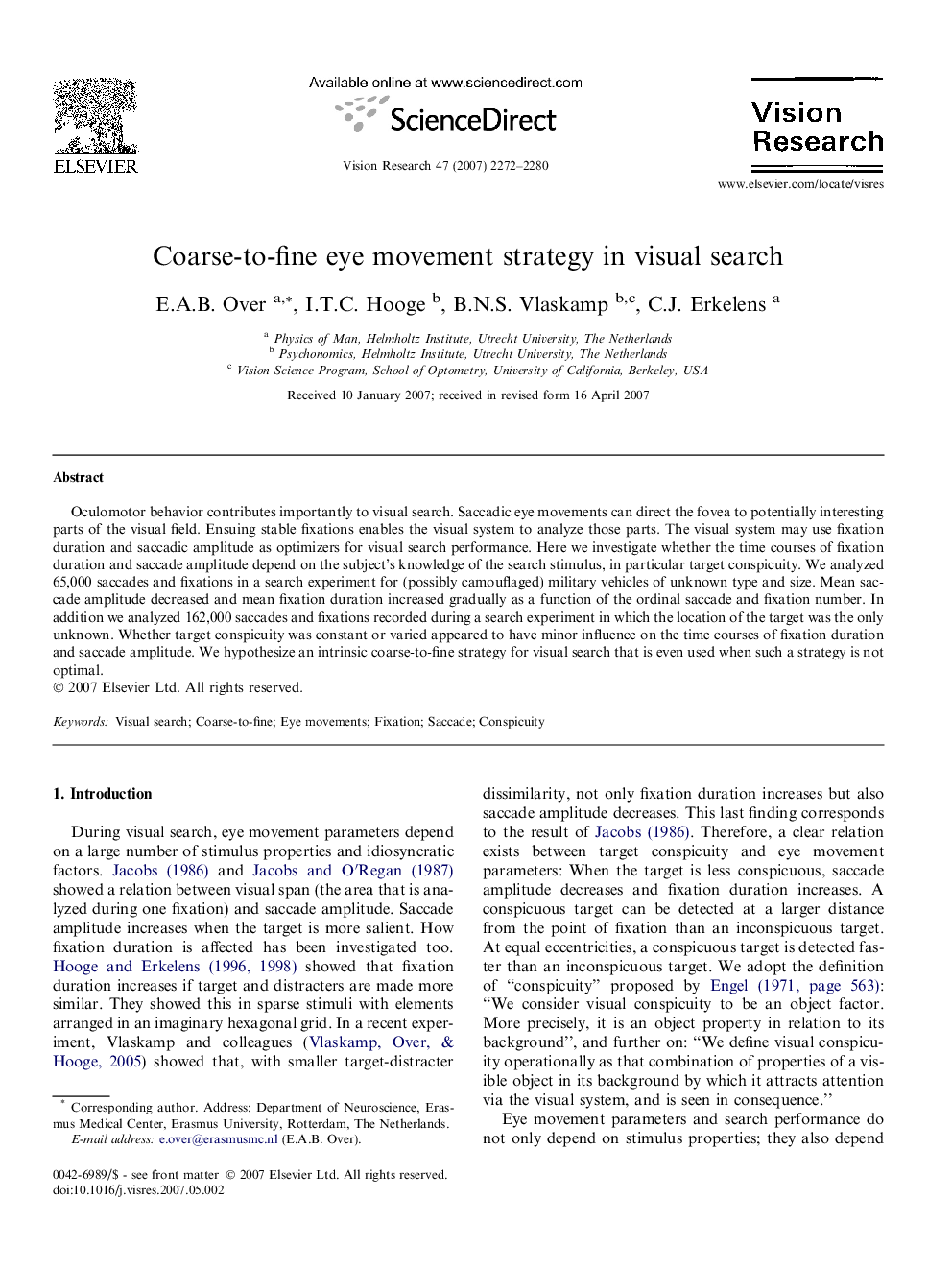| Article ID | Journal | Published Year | Pages | File Type |
|---|---|---|---|---|
| 4035452 | Vision Research | 2007 | 9 Pages |
Oculomotor behavior contributes importantly to visual search. Saccadic eye movements can direct the fovea to potentially interesting parts of the visual field. Ensuing stable fixations enables the visual system to analyze those parts. The visual system may use fixation duration and saccadic amplitude as optimizers for visual search performance. Here we investigate whether the time courses of fixation duration and saccade amplitude depend on the subject’s knowledge of the search stimulus, in particular target conspicuity. We analyzed 65,000 saccades and fixations in a search experiment for (possibly camouflaged) military vehicles of unknown type and size. Mean saccade amplitude decreased and mean fixation duration increased gradually as a function of the ordinal saccade and fixation number. In addition we analyzed 162,000 saccades and fixations recorded during a search experiment in which the location of the target was the only unknown. Whether target conspicuity was constant or varied appeared to have minor influence on the time courses of fixation duration and saccade amplitude. We hypothesize an intrinsic coarse-to-fine strategy for visual search that is even used when such a strategy is not optimal.
